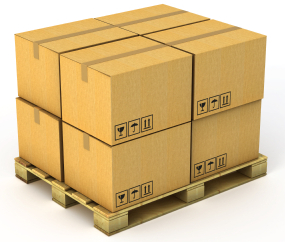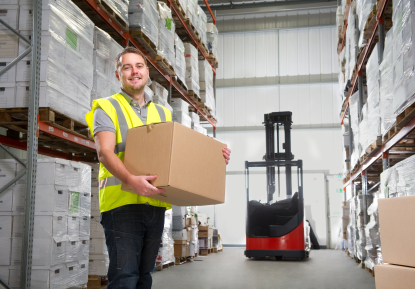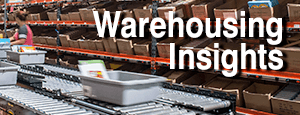What Does It Cost to Store a Pallet in Third-Party Storage
Calculate the value of warehouse storage

If you’re paying someone to store a pallet for you, what’s reasonable?
Are you overpaying for convenience or location? It’s not easy to compare 3PL vs. 3PL, or even your own warehouse so you know for sure if you are getting value for your money. But there are some basic assumptions you can make to help you understand what you’re dealing with, the costs the 3PL may experience, and reasonable costs for your storage projects.
The Basic Cost Factors of Pallet Third-Party Storage:
Location – probably the most important single factor. Does the warehouse site have access to major markets that are important to you? Does it have multiple locations to help you spread inventory to needed areas? It costs more to have access to major markets such as Atlanta, Chicago, Los Angeles, Boston, or Dallas than less populous areas, although in some cases the scarcity of industrial space in smaller markets may drive prices up. Access to trucking hubs, rail lines, interstates, or airports also have direct bearing on these costs. If fast access to major markets and transport infrastructure are important, you’ll pay more for it.
Value added services provided – is the provider just storing pallets for you, or is it picking and packing? Is it conducting inventory counts? Big differences are possible based on activities.
Stocking and pulling – what kind of handling fees are charged to bring the pallet into the facility? What’s charged to pull it and load it for you when it departs?
Terms – can you lease a certain number of pallet positions over time to reduce the costs per unit? Are you obligated to sign contracts, or can you purchase storage as needed?
Insurance & fees – what kind of operation is handling your stock? What kind of fees may the provider ask for based on the type of work going on? If you’re purchasing only basic storage, be sure you aren’t subsidizing others who are purchasing a higher level of service.
Volume – how many storage positions do your require? How often do you turn this stock?
Warehouse conditions – is the facility easily accessible to you? Is it climate-controlled? Is it well-lit, capable of taking customer or executive visits, or is it a dusty storage depot? You can use both types of facilities, but costs are going to vary based on it. How secure is the facility? How trustworthy are its workers and management? Obviously for cold storage, pharmaceutical compliant storage, high-security warehouses, and other specialized services, you’ll pay more.

How to Estimate the Potential Cost of Third-Party Pallet Storage:
- Cost to lease a warehouse for one year: $4 to $7 per square foot
- Operational (utilities, insurance, taxes, etc) expenses: $2 to $3 per square foot annually
- Fork truck leasing, per truck: $750 to $1,000 per month, per truck
- Cost per hour per worker: range of $30-$40 (includes administrative & management costs, benefits, commissions, etc).
These numbers may provide a rough baseline so you can estimate your supplier’s costs. They are obviously variable between locations and facility types. Refrigerated or climate controlled warehouses with state of the art storage and handling equipment cost more; simple static storage facilities with little in the way of capabilities, less.
Static expenses: At the high end for a 50,000 square foot building, ($7 lease costs, $3 operational per square foot), the warehouse could cost $500,000 a year before labor, equipment rentals, etc. Split that amongst the total pallets stored and you are starting to see the total cost picture. Add in labor, forklift rentals, etc. and the picture starts to solidify.
Active expenses: Add number of operators x high end of estimated labor (say, 8 workers, 8 hours a day at $40/hr.): $2,560 per day of operations. That’s $665,000/year for a 260-day per year work schedule. If five forklifts are leased, factor in $1,000 per month x 12 months: $12,000/year. If other specialized equipment is used in the operation, you can attempt to factor that in as well.
So if we have a static expenses plus active expenses, this warehouse would run its operator $1.1 million to run per year. If the facility can store 10,000 pallets, they would cost roughly $116.56 a year per pallet, divided by 10,000 for a total of $116.56 per position per year, or $9.71 per month. This is a very high estimate, assuming the highest cost per pallet position. The point is, you can find a number that’s in the neighborhood of cost per position for any particular geographic area. This obviously varies based on where you are, what you’re storing, and the company you are dealing with.
Note: this article is informational only. Cisco-Eagle is not a third party warehousing company but works to service the warehouse sector with automation, storage and safety systems. We cannot recommend 3PL providers.
Citations and more resources:
- Pallet rack estimator/configuration (Cisco-Eagle)
- Measuring cost per position (Cisco-Eagle)
Related Articles:
- Compare High Density Pallet Storage Racks
- 5 Common Mistakes People Make with Pallet Racks
- How to Store Empty Pallets
Tags: Pallet Rack, 3PL, storage systems, warehouse, pallets, Third Party Logistics, ecommerce
Scott Stone is Cisco-Eagle's Vice President of Marketing with 35 years of experience in material handling, warehousing and industrial operations. His work is published in multiple industry journals an websites on a variety of warehousing topics. He writes about automation, warehousing, safety, manufacturing and other areas of concern for industrial operations and those who operate them.



